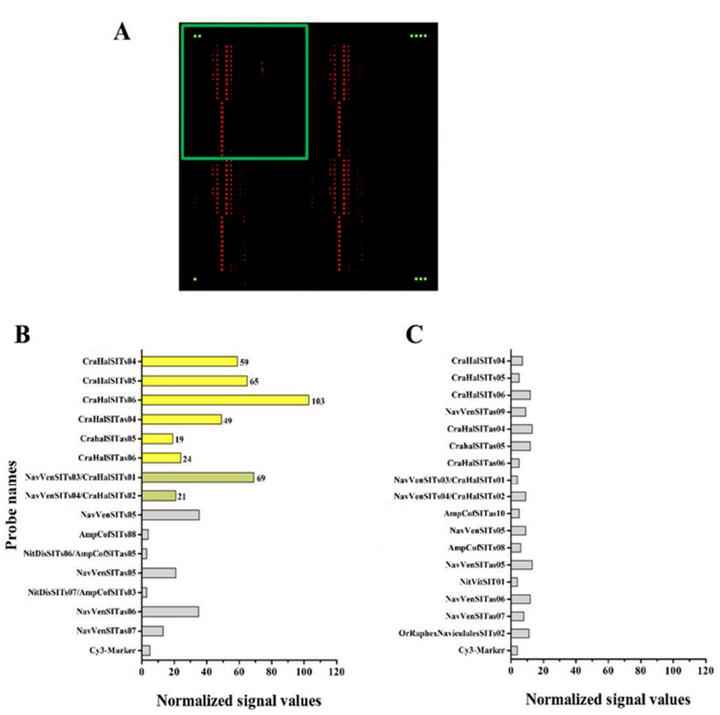Molecular Tools for the Selective Detection of Nine Diatom Species Biomarkers of Various Water Quality Levels

Abstract
Our understanding of the composition of diatom communities and their response to environmental changes is currently limited by laborious taxonomic identification procedures. Advances in molecular technologies are expected to contribute more efficient, robust and sensitive tools for the detection of these ecologically relevant microorganisms. There is a need to explore and test phylogenetic markers as an alternative to the use of rRNA genes, whose limited sequence divergence does not allow the accurate discrimination of diatoms at the species level. In this work, nine diatom species belonging to eight genera, isolated from epylithic environmental samples collected in central Italy, were chosen to implement a panel of diatoms covering the full range of ecological status of freshwaters. The procedure described in this work relies on the PCR amplification of specific regions in two conserved diatom genes, elongation factor 1-a (eEF1-a) and silicic acid transporter (SIT), as a first step to narrow down the complexity of the targets, followed by microarray hybridization experiments. Oligonucleotide probes with the potential to discriminate closely related species were designed taking into account the genetic polymorphisms found in target genes. These probes were tested, refined and validated on a small-scale prototype DNA chip. Overall, we obtained 17 highly specific probes targeting eEF1-a and SIT, along with 19 probes having lower discriminatory power recognizing at the same time two or three species. This basic array was validated in a laboratory setting and is ready for tests with crude environmental samples eventually to be scaled-up to include a larger panel of diatoms. Its possible use for the simultaneous detection of diatoms selected from the classes of water quality identified by the European Water Framework Directive is discussed.